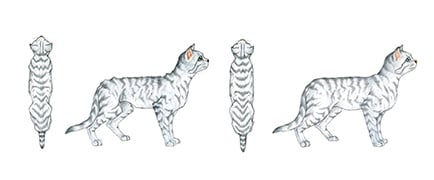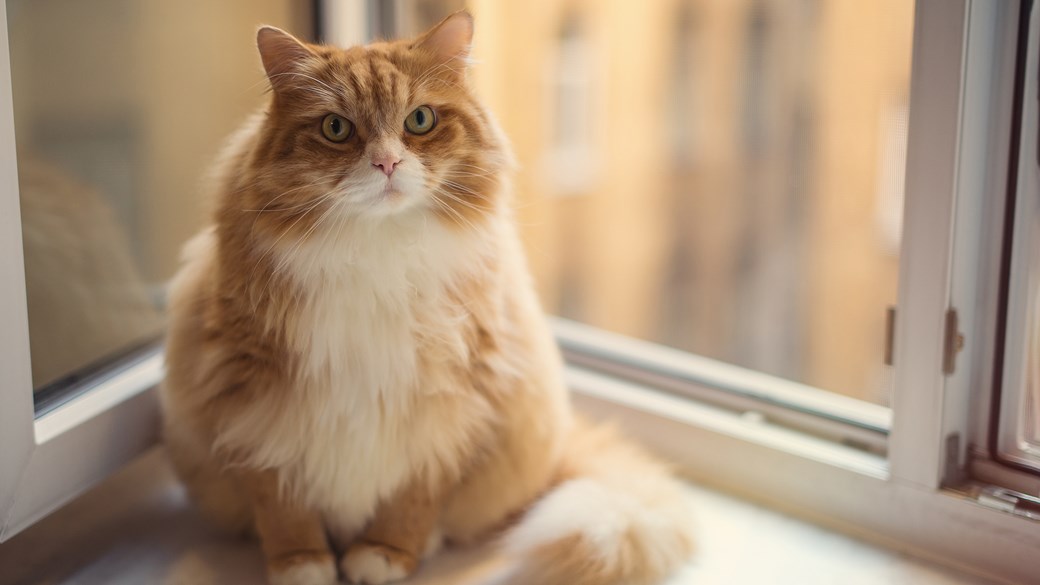
Body Condition Scoring
Body condition scoring is a system developed by vets to help you assess if your dog, cat or rabbit is the correct weight.
Just like people, dogs, cats and rabbits come in all shapes and sizes, and weight alone is not a good measure to see if your pet is healthy. By looking at your pet’s overall shape, and getting ‘hands on’, you can get a much better idea of whether your pet is doing well, needs to put weight on, or if they might be carrying a few extra kilograms.
Body condition scores mainly involve looking at and feeling the ribs and waist, and guideline charts like those below can help you assess what you are seeing and place your pet on the body condition score scale.
Pet body conditions
Too thin
1. Ribs easily visible in short-haired cats, unable to feel any fat. Bones of the lower spine and top of the pelvis easily felt. Very obvious waist behind the ribs when viewed from above.
2. Ribs easily visible in short-haired cats, unable to feel any fat. Bones of the lower spine easily felt. Tummy tucks up clearly when viewed from the side and poor muscle cover.
3. Ribs and the lower spine can be felt easily, but not clearly seen. Clear waist and tummy tuck and very little fat.
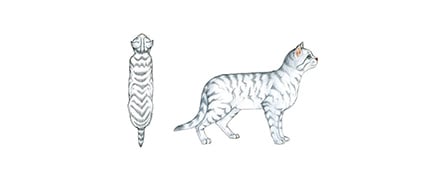
Ideal
4. Ribs can be easily felt with a little fat over the top. Noticeable waist, and no fat on the belly.
5. Well-proportioned. Slight fat covering the ribs, waist and tummy tuck visible and small fat pad present on the tummy.
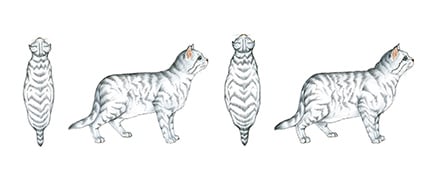
Too heavy
6. Overweight. Slightly excessive fat over the ribs. Waist can be seen but not easily and slight build-up of fat under the tummy.
7. Overweight. Ribs are hard to feel and difficult to see a waist or tummy tuck. Tummy is rounded and fat can be felt underneath.
8. Obese. Not possible to feel ribs and no waist or tummy tuck visible. Rounded belly with a clear fat pad underneath. Fat also present over the lower spine.
9. Obese. Not possible to feel the ribs under the heavy fat cover. Lots of fat around the tummy, very rounded and no waist. Fat also present on the spinal area, face, and legs.
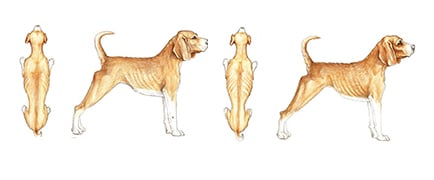
Too thin
1. Ribs, lower spine and pelvis all obvious from distance, and bones visible wherever they lie close to the surface.
2. Ribs, lower spine, and pelvis all easily visible. Unable to feel any fat. Poor muscle mass. Clear waist when viewed from above, and abdomen tucks up behind the ribs when viewed from the side.
3. Ribs easily felt and may be visible. No fat can be felt. The very top of the spine and pelvis are visible and there is an obvious waist and abdominal tuck.
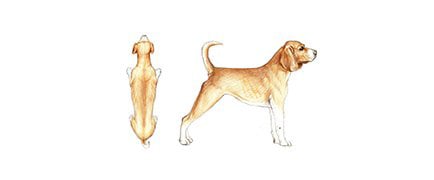 Ideal
Ideal
4. Ribs are easily felt and have only a little fat covering. Waist and tummy tuck are easily seen.
5. The ribs can be felt, and there is no excessive fat. Waist can be seen behind the ribs from above and the tummy tuck can be seen from the side.
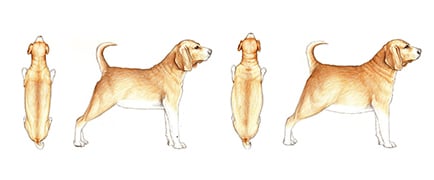
Too heavy
6. Overweight. The ribs can be felt but there is a notable fat layer. Waist just visible from above and tummy still rises behind the ribs.
7. Overweight. Hard to feel the ribs due to heavy fat cover. Fat noticeable over the base of the tail and lower spine. No visible or barely visible waist.
8. Obese. Not possible to feel the ribs due to heavy fat cover. Lots of fat around the spine and the base of the tail. No waist of tummy tuck. Belly may appear rounded.
9. Obese. Huge amounts of fat around the chest, spine and the base of the tail and fat also deposited on the neck and legs. Abdomen large and noticeably round.
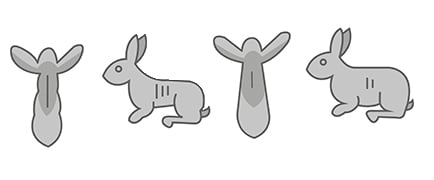
Too thin
1. Hips bones, ribs and spine are very sharp to the touch. Loss of muscle and no fat cover. The rump area curves in.
2. Hip bones, ribs and spine are easily felt. Loss of muscle and very little fat cover. Rump area is flat.
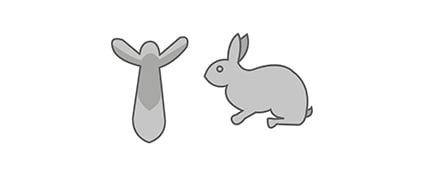
Ideal
5. Hip bones, ribs and spine are easily felt but are not rounded, not sharp - Ribs feel like a pocket full of pens! No abdominal bulge. Rump area is flat.
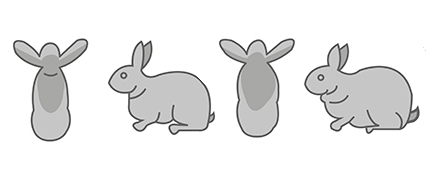
Too heavy
7. Pressure is needed to feel the ribs, spine and hip bones. Some fat layers. The rump is rounded.
8. Very hard to feel the spine and hip bones. Ribs can't be felt. Tummy sags with obvious fat padding. Rump bulges out.
Top tip
We asked Danielle, Registered Veterinary Nurse at Vets4Pets Corstorphine, for guidance on checking that your pet is a healthy weight.
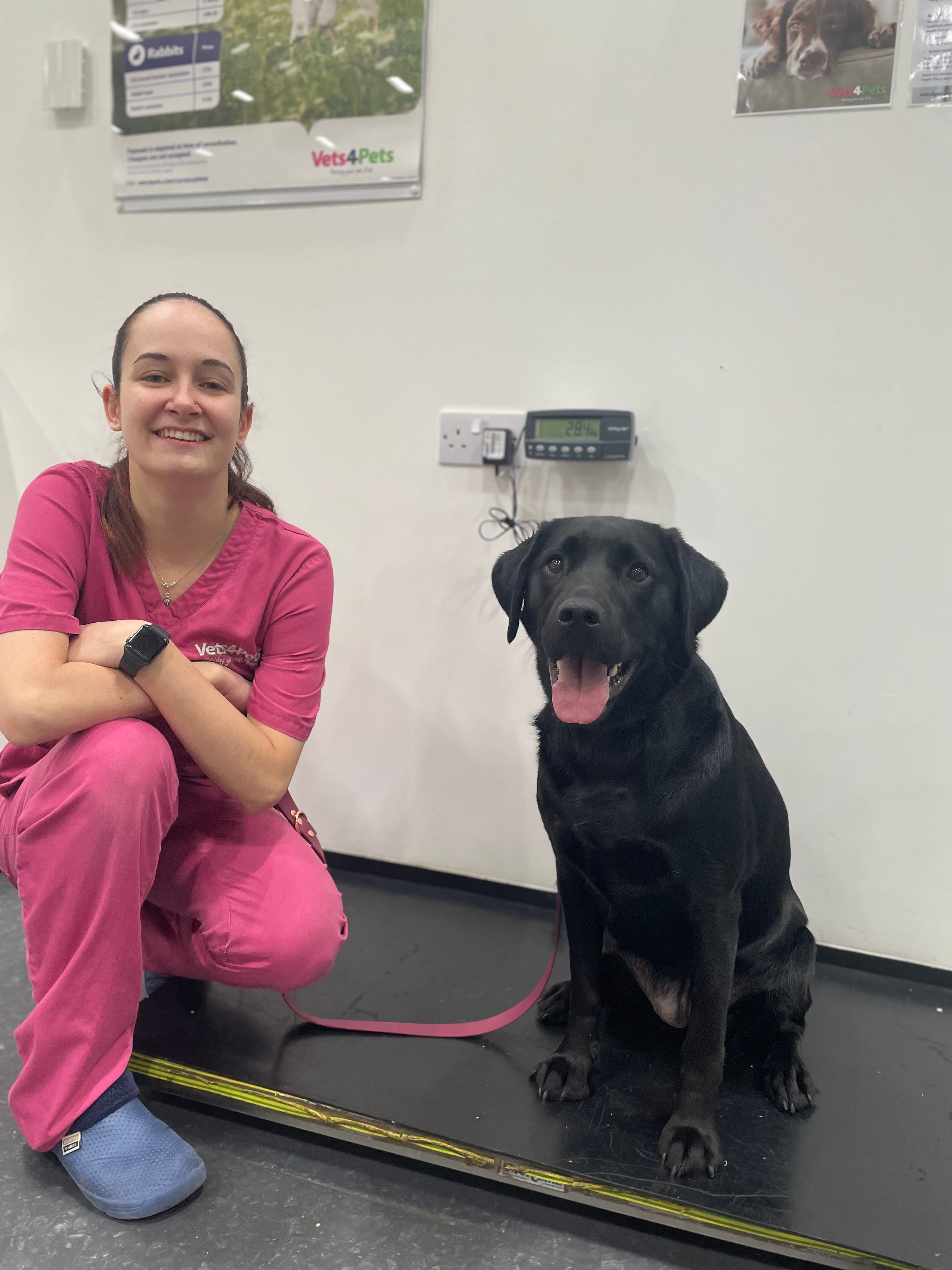 "You should be able to feel your pets’ ribs without having to apply excessive pressure. Having to apply pressure would indicate the pet is overweight. If ribs are visible the pet may be underweight. The body score chart can be used to show if our pets are underweight, overweight or ideal weight. We aim for our pets to be a score of 4 or 5 on this scale. If you require help or find it difficult to maintain your pet at a healthy weight, then you can call your clinic and book in with a nurse for a consultation and additional help."
"You should be able to feel your pets’ ribs without having to apply excessive pressure. Having to apply pressure would indicate the pet is overweight. If ribs are visible the pet may be underweight. The body score chart can be used to show if our pets are underweight, overweight or ideal weight. We aim for our pets to be a score of 4 or 5 on this scale. If you require help or find it difficult to maintain your pet at a healthy weight, then you can call your clinic and book in with a nurse for a consultation and additional help."

